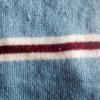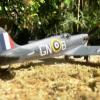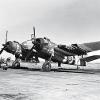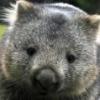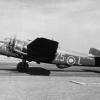Search the Community
Showing results for tags 'Gladiator'.
-
Gloster Gladiator Mk.I/II (A02052A) 1:72 Airfix The Gladiator was developed by the Gloster Aircraft Company as a private venture with the aim of fulfilling Air Ministry Specification F.7/30. This specification called for a fighter aircraft capable of 250 mph and able to carry four machine guns. Rather than opt for a new design, Gloster decided to develop a proposal based on the existing Gauntlet fighter. The resulting aircraft featured improved aerodynamics, cantilever undercarriage, an extra pair of machine guns, a more powerful engine and an enclosed cockpit. The Gladiator flew for the first time in September 1934 and entered service in January 1937. Such was the pace of aeronautical development in the late 1930s that the Gladiator was becoming obsolete even as it was entering service. Nevertheless, over 700 examples were built (including Sea Gladiators) and it saw action in most theatres of the Second World War. Despite being more demanding to fly than the Gauntlet, the Gladiator was popular with pilots. The Gladiators finest hour was probably the battle for Malta in 1940, when a handful of aircraft formed the entire air defence of the besieged island. Airfix's released this kit back in 2013, just as they were hitting their stride following their acquisition by Hornby. The kit is part of the Series 2 range and arrives packed into a red top-opening box with the usual high-quality Adam Tooby artwork showing a Gladiator engaging an He 111. Inside are three sprues of grey plastic and a single clear sprue, holding over 60 parts in total. The mouldings are clean and crisp, with fine, recessed panel lines around the nose of the aircraft and an effective stretched fabric effect elsewhere. As this is the Mk.I/II version, the extra sprue from the Swedish boxing is included, although the only part required for this model is the Fairey three-blade propellor. The cockpit comprises a framework floor, seat, headrest, and a single part for the combined control column/rudder pedals. A pilot is also included. The inside of the fuselage sidewalls are nicely detailed and you have the option to remove the access hatch and replace it with a dedicated part that can be fixed in the open position. Before closing up the fuselage, you must fix the fuselage mounted .303 inch browning machine guns through the muzzle holes. These are quite finely moulded and should look much better than if they were just moulded as lumps on the side of the airframe. The remaining steps in the construction process are fairly conventional, but with some clever twists. The upper fuselage immediately in front of the cockpit is moulded as a separate part. The inner struts, the rearmost of which also includes the instrument panel, have to be sandwiched between this part and the fuselage. The lower wing follows, and as you can see from the photograph below, Airfix have marked the points you will need to use if you want to rig the model. Top marks, Airfix! The engine and cowling is quite a complex assembly, made up of no fewer than ten parts. The Bristol Mercury engine comprises the exhaust manifold and the single row of nine cylinders, as well as some smaller parts. The cowling is made up of four parts, with this somewhat complex arrangement being necessary because of the oval cross-section shape of the cowling. The inter-wing struts have to be added before the upper wing can be fixed in place. Airfix have taken an approach that was fairly novel in 2013, but which seems to be more commonplace now. Each pair of struts is joined by a small sprue which holds them at the correct angle. These have to be left in place while the wings are joined together and then removed afterwards. This is a clever twist, and it's nice to see Airfix have tried to make this model as easy to build as possible without compromising detail. Once the upper wing is in place, the tail planes can be added. The rudder is moulded as a separate part, but all of the other control surfaces are moulded in place. The undercarriage is simple but effective, and the wheels have separate hubs, which will aid painting. A choice of tyres is provided, both with and without flat spots. When it comes to the canopy, Airfix give you a choice of using either a single part or a canopy split into two parts. If you choose to rig your model, a full page diagram is provided, which shows how to break the job down into simple steps. Two options are provided on the decal sheet: Gladiator Mk.II, 615 (County of Surrey) Squadron, Royal Air Force, St. Inglevert, Northern France, December 1939. This aircraft is finished in Dark Earth/Dark Green and Light Eart/Light Green; and Gladiator Mk.I, 1 Escadrille, 1 Groupe Belgian Air Force, Schaffen Air Base, Diest, Belgium, 1938. This aircraft is finished in Olive Drab over silver. The decals themselves look thin and glossy and a full set of stencils are included. Conclusion This isn't the only available kit of the Gladiator in this scale, but it is the best. Although I have a soft spot for the Matchbox version, Airfix's kit has a wealth of extra detail, more options and should be just as easy to build. Overall this kit is a real gem and should build up into an excellent model. Highly recommended. Review sample courtesy of
-
Hi all, Here's my 1/72 Airfix Gloster Gladiator Mk.II, done as N5583 with No. 605 Sqn at RAF Tangmere in August 1939. I bought this kit back in early January as a simple project to work on while I was away from home for a week, so without my airbrush. I hand painted it using Vallejo paints (Model Air ones actually), and some Italeri paint. Only the flatcoat has been airbrushed. Markings are from the kit. The rigging was done with EZ line, and then brushed gunship grey. My hand painting skills are pretty bad, so up close it's quite messy, but from a distance it looks half decent, I think. Thanks for looking, Pete
- 4 replies
-
- 20
-

-
- hand brushed
- Gladiator
-
(and 1 more)
Tagged with:
-
ICM is to release new tool 1/32nd Gloster Gladiator kits: - ref. 32040 - Gloster Gladiator Mk.I - released Sources: https://icm.com.ua/aviation/gloster-gladiator-mk-i-wwii-british-fighte/ https://www.hannants.co.uk/product/ICM32040 - ref. 32041 - Gloster Gladiator Mk.II - released Source: https://icm.com.ua/aviation/gloster-gladiator-mk-ii-2/ - ref. 32042 - Gloster Sea Gladiator Mk.II - released Source: https://icm.com.ua/aviation/gloster-sea-gladiator-mk-ii-3/ - ref. 32043 - Gloster Sea Gladiator Mk.I with British Pilots in Tropical Uniform - released Source: https://icm.com.ua/aviation/gloster-gladiator-mk-i-2/ - ref. 32044 - Gloster J8 Gladiator - Swedish fighter - released Source: https://icm.com.ua/aviation/j-8-gladiator/ - ref. 32045 - Gloster Sea Gladiator Mk.II with Royal Navy pilots - released Source: https://icm.com.ua/aviation/gloster-sea-gladiator-mk-ii-with-royal-navy-pilots/ Dedicated decals by ICM: - ref. D3204 - Gladiator Mk.I/II in Foreign Services - released Source: https://www.hannants.co.uk/product/ICMD32004 V.P.
-
After the badly researched (kit-wise) false start to an attempt at a Hurricane, this should be my entry for the GB. Decals have been ordered depicting a Gladiator Mk.1 “10” Fighter wing F8 2nd Div. I should be ok for a kit this time, I have the Airfix Gladiator Mk.1 and the HobbyBoss easy assembly job. Which to go for. The HobbyBoss looks very easy and doesn’t seem too bad detail wise, the Airfix kit looks good and has indents for the wiring and a decent wiring diagram. I’ll mull that over a glass or two of something this evening and then commit tomorrow - box and sprue shots to follow once the white smoke appears from Casa Avereda.
-
I'm planning a 1/48 Gladiator Mk II based on the Eduard ex Roden edtion. The decal sheet gives markings for N2308 615 Squadron, Merville, France 1939. However I have my doubts that the instructions which show the squadron code being on the starboard side as T - KW. I think it was KW - T? I've found a photograph which seems to bear out my doubts. Also what is the line on the propeller about a third of the way in from the tip?
-
It's one of my all-time favourite aeroplanes and not one that I've ever managed to build properly - so why not try and do one in a week? Yes, it's the Gloster Gladiator as my second and final entry in this GB. My first attempt at a Gladiator was with the old tool Airfix kit. It went together OK but looked rather anorexic. My second attempt at a Gladiator was the 1/48 Roden Sea Gladiator which collapsed into a gluey blancmange. Third time lucky? Let's hope so with the old Matchbox kit repopped by Revell: If my Hawker Fury was anything to go by, I hope that this will be a confidence-building experience. I've got all manner of decals for Gladiators but given the time available I'm going to stick with an all-silver pre-war scheme. The question is: which one? All have their merits and all will be done at some point. As I've done the silver-and-yellow Fury I feel it would be quite nice to come up with something that complements it. I fell in love with the Gladiator as a small boy on my first visit to The Shuttleworth Collection when their example was in 72 Sqn colours, so that has appeal... ... but the 73 Sqn scheme of 'Cobber' Kain that Shuttleworth's Gladiator wears today is a lot more attractive to my eye, and I've got those decals in the new tool Airfix kit... ...and then there's the 87 Sqn scheme that is in my Pavla upgrades box... ...and as a final choice there's the 3 Sqn decals which come with the Revell kit. It's plain silver all over but I love the art deco '3' for the tail. So while I'm getting on with building a standard silver Gladiator I'm going to throw this one open to the floor with a poll. Which scheme would you like to see in the Gallery next weekend? All thoughts gratefully received.
-
I am not sure if this is the right thread to be asking this... Does anyone have a profile or at least a very good description of Dahl's Gladiator that he flew in Libya? I have found nothing online... Thanks, John
-
Hi Squadron Leader Marmaduke Thomas St John Pattle DFC*, usually known as Pat Pattle, was a South African-born Second World War fighter pilot and flying ace of the Royal Air Force. Wikipedia His score could be as high as 51. A total of 26 of Pattle's victims were Italian; 15 were downed with Gloster Gladiators, the rest with Hawker Hurricanes.[He is considered to be the highest-scoring ace on both Gladiator and Hurricane (35 victories) I have chosen to model his Gloster Gladiator using the current Airfix 1/72 Gloster Gladiator MkI when he was based in North Africa. This is the second biplane I have rigged using nylon invisible sewing thread, which is visible at this scale. Next time I might stain the thread with dark grey felt tip. I have used xtracolor RAF Dark Earth and Tamiya XF81 Dark Green 2 for the upper surfaces and Tamiya Titanium for the upper wing undersurface and finally Tamiya White X-2 and Tamiya XF1 flat black. I used an artists oils muddy black pinwash for the panel lines and another pinwash of a light dust colour for panel lines on the black underside and to give a dusty weathered effect to the general model. I used Humbrol Clear matt originally as the final cote and this was TOO matt and left white residue so I oversprayed it in Humbrol Clear Satin which gave a much more realistic finnish Unlike peace time Gladiators the propeller was painted black with a dark earth leading edge and the exhaust collector ring was modelled on images of pegasus engines that had actually been run as the brass shows subtle changes in colour from different temperatures of exhaust gas with an aluminium coloured front and back edge. I hope you like the photos on a makeshift diorama
- 20 replies
-
- 35
-

-
Hi everybody; here's the lovely Mitchell Military Models Roman General Bust in 1/9. Outstading resin model, only two parts (head an torso), making for a boatload of painting fun Huge value for the money, if you ask me, and my thanks to Ross Mitchel for the really kind service. Thanks also to everybody followed and contributed to the WIP thread, which can be found here: On with the pics: This bust has been painted mainly with Lifecolor and Italeri acrylics, plus a few other paints for metallic parts; the black base coat was airbrushed, and so was the steel shoulder armor and the face base coat. All the rest is brush painted. Any comments welcome, hope you enjoy it. Ciao
- 12 replies
-
- 23
-

-
- gladiator
- russel crowe
-
(and 1 more)
Tagged with:
-
Hi folks, my latest additon to my Finnish AF collection. Built with Kuivalainen etched that provided some parts specific for Finnish machines, Aires wheels as those in the kit are a bit ugly and SBS decals for GL-264 from 2/LeLv16. Painted with Gunze acrylics and rigged with flat elastic thread. Cheers Libor
-
Hi all, I am looking to build one of the three sea gladiators that was involved with the defence of Malta, I have looked at multiple reference photos and they have three bladed props rather than the two bladed prop seen in the Airfix kit. They also have arrestor hooks but I am not sure these were present of the Malta gladiators, If I can get any info on a conversion set or something similar that would be greatly appreciated. -Cam
- 28 replies
-
Well I've joined so I'd better contribute summat. OOB build of AIrfix's MK I Gladiator. Build Record Cross posted this in the kit review: The bad news is that Airfix have suspended production of this kit (and A02067 - Hurricane Mk I). I got the following back from Hornby Customer Care when, it no longer being available on their website, I queried the short production run, "A02067 and A02052 have indeed been discontinued from this years range. Due to trading results earlier in the year we have had to discontinue some kits and postpone others from the range. These kits may come back but this will not be this year, the production run would have been longer but we have had to down size the range."
-
This is my last full build of 2016 and to be truthful it wasn't the best of kits to put together. Was quite pleased with the rigging though although I found out thet NMF and rigging don't go together well(for me anyway) finish is mainly Vallejo Metal with some bits of brush painted 'true metal'. engine 'ring' is vallejo copper. The rigging was done by drilling half-way through the upper wing, supergleing some fishing line on then passing these through fully drilled holes in the bottom wing and tensioning then whilst gluing, again with CA(hench the messy finish near the rigging points) Anyway here it is warts and all............hope the airfix kit in the stash goes together better !!!
-
Well here's a hoary old subject for a winter's build! A Malta-based Sea Gladiator of the Hal Far Fighter Flight. The story is well worn and a bit tatty around the edges. When Italy declared war on Britain and France in June 1940, there were only a handful of Gloster Sea Gladiators available to defend Malta from the attentions of the Regia Aeronautica. These had been among 24 Gladiators that had been stored at the Kalafrana seaplane base during 1939 for onward transit to the carriers Eagle and Glorious. Six were sent elsewhere, the Eagle received her complement of eight but the ten bound for the Glorious remained unclaimed, and these were reassigned to form the Hal Far Fighter Flight. An appeal for volunteers to fly them brought forth eight pilots, led by staff officer George Burges, but then the Navy decided that actually it wanted its Sea Gladiators aboard the Eagle and ordered them to be dismantled and prepared for transit. A last minute change of heart saw only three of these Gladiators removed and remaining seven were left on the Island to be erected and flown from Hal Far. The arrester hook and naval gubbins were removed, armour plate fitted behind the pilot's seat and an intensive period of training began. Given the paucity of aeroplanes and spares it was decided to organise the pilots into two flights of four, working a rotation, and no more than two aeroplanes could be in the air at one time. When the Italian bombardment of Malta began, this was initially increased to three aeroplanes but practical reasons brought this back down to two after a couple of days. The sight of the Gladiators flying out to engage incoming fighters and bombers was a significant morale booster, and almost immediately the Hal Far Fighter Flight became enshrined in myth. Who first used the term 'Faith, Hope and Charity' is unclear: it may have been a devout and thankful Maltese, it might have been an LAC remembering his mother's locket, it may have been a member of Churchill's propaganda team. Whosoever may have coined the phrase did little to describe the realities of the Gladiators' battle but did give Malta a talisman. The Gladiators and their pilots gave as good an account of themselves as could be hoped for a handful of hopelessly outdated machines. They weren't fast enough to get their teeth into the bombers but their presence and persistence caused some disarray among the Italian formations. On 22 April, George Burges happened to spot an Italian reconnaissance aircraft below him and dived on it over the capital, Valletta, shooting the port engine off and causing it to crash into the sea. The following day, Burges was attacked by a Macchi C.200 which tried to follow the little Gladiator when it went into a defensive turn. When it overshot its target, Burges duly fired and hit the Italian fighter, which promptly caught fire and crashed. These victories brought enormous cheer to Malta and celebrity status to Burges and the Gladiators. In total, the Gladiators were credited with nine enemy aircraft destroyed and five damaged. By that time, the first Hawker Hurricanes had arrived from an overland crossing via France and would soon take over the lion's share of the defence. Nevertheless, the Gladiators remained in service thanks to the ingenuity of the ground staff. When two Gladiators were written off in landing accidents on successive days, they were cobbled together into one functioning aeroplane. A six-gun Gladiator was built, with additional Brownings located under the upper wing. Famously, worn-out engines were replaced with those taken from wrecked Blenheims, and jury-rigged to operate their three-blade variable pitch props. Burges was awarded the DFC on 19 July for being credited with three enemy aircraft destroyed and three more damaged. On 31 July the Gladiator N5519 was shot down, with its pilot suffering severe burns. On 2 August, Operation HURRY brought another 12 Hurricanes launched from the carrier HMS Argus and all the Island's fighters were amalgamated as 261 Squadron. The Gladiators remained on strength until January 1941, when there were sufficient Hurricanes for them to be retired from front-line duty. In 1941, the remaining Gladiators were officially on the strength of 806 Squadron, Royal Navy, making Meteorology flights. One by one they gradually disappeared either from lack of spares or bomb damage. As with so many old airframes, the broken Gladiators were dumped into an old quarry near Luqa airfield and forgotten about until 1943, when one skeletal fuselage purporting to be that of N5520 was presented to the Maltese to mark the lifting of the siege. To this day it remains in the Malta War Museum in the old sea fort in Valletta, and is the subject of much debate between the various historians and organisations on the Island. I love the Gladiator, it's just about my favourite aeroplane and has been so since the age of five, when I was first taken to the Shuttleworth Collection and came away with a postcard of their glamorous silver machine. There's a fleet of 1/72 Gladiators in the stash - mainly the new tool Airfix - a but for this GB I'll be doing the bigger Roden kit. My plan is to build it in original June 1940 trim, with the 2-blade prop and no arrester hook. The decal options for Malta in the kit cover N5519 in her June-July appearance and N5520 as she appeared in the summer of 1941, but I'll make the final decision on markings further down the line. To get us started, here's a rather charming little film that someone has done about the legend of 'Faith, Hope and Charity'. It's littered with errors of all kinds but rather enjoyable nonetheless:
-
Gloster Gladiators of the Royal Air Force first saw active service on 'Air Control' operations during the Arab Revolt in Mandatory Palestine. 33 Squadron, based since 1935 at Ismailia in Egypt, began to exchange its Hawker Hart light bombers for Gladiator fighters in February, 1938. 80 Squadron, a Gladiator unit based at Kenley, was embarked for Egypt in April, and arrived the following month. These two units were the total fighter strength of the RAF in the Near East, and while their presence had been intended for protection of the Suez Canal from Italian bombers, should war come with that country, a more immediate employment soon was found for them. The distinguishing characteristic of the Arab Revolt which commenced in Mandatory Palestine in late April, 1936, was the degree to which at the outset all elements of Arab Palestinian society cohered in a unity of purpose. The most visible element at the start of the Revolt was a general strike, and a wide-spread refusal to pay taxes. The Mandate authorities considered these things far more important, and far more dangerous, than urban riots or the emergence of partisan bands in rural areas. The Mandate authorities managed, by a judicious mix of political manouvering and military force, to break the strike and restore order in urban areas, but only damped down violence in the countryside. Among the political manouvers was establishment of a Royal commission to look into causes and solutions: The Peel Commision report, when it came, pleased neither Arabs nor Jews. The killing of a District Commissioner in Galilee in September, 1937, followed immediately by the outlawing and deportation of leading Arab political figures, renewed the violence of the previous year. The activity of the partisan bands in the countryside escalated quickly, and was on a sounder footing than previously it ever had been. By the summer of 1938, armed Arab bands were collecting taxes and running courts in many places, and the situation in Mandatory Palestine was considered quite precarious by both military and political authorities. Major reinforcements of soldiers, police, and aircraft were provided the Palestine garrison in the wake of the Munich Crisis for a renewed effort to break the insurrection. A flight of Gladiator fighters from 33 Squadron, and another from 80 Squadron, based at Ramallah, were an important element of the aerial reinforcement. Aircraft could do little to influence matters in the urban areas, where the Arab and Jewish 'hard men' engaged in tit-for-tat murders by bomb and pistol, but in the countryside, aircraft had throughout been the most effective battle arm of the Palestine garrison. Very early a system known as the 'XX Call' had been set up, in which RAF wireless staff accompanied Army operations, to summon air support if contact with any large number of partisans occured. Aircraft were always waiting on five minutes notice for take-off, and there was no part of the country which could not be reached in under half an hour. The system proved so efficient that often operations by ground troops were, in effect, simply bait to draw out Arab bands in the hills so the aircraft would have opportunity to attack them. The Gladiators, with four machine guns, had far more fire-power than the Hardy and Hind machines already on the scene, which could only bring one gun to bear at a time, and strafing had proved already to inflict more casualties than bombing in such operations. The Gladiators came to specialize in what were called 'Air-Pin' operations. Efforts to disarm the Arab partisans in the rural villages had foundered on the ease with which approaching troops could be seen coming, and when they were seen, the partisans could quickly disperse in flight, carrying their small stocks of arms and ammunition. In 'Air-Pin' operations, Gladiators appeared over a village before ground troops were seen approaching it, and persons deemed to be fleeing the approaching columns of soldiers and police were shot from the air. These operations greatly increased the quantity of arms seized and arrests made, as well as casualties inflicted, not all of whom, certainly, were actual partisans in arms. The 'Air-Pins' were not completely one-sided, either. At least two Gladiator pilots of 33 Squadron were killed by rifle fire, and their aeroplanes wrecked and abandoned. By the end of January, 1939, the dominance of the Arab rebels in the countryside had been broken, their activities in Palestine coming to amount to little more than occasional sniping and murder of persons suspected to be collaborators with the Jews or the English. Political concessions to the Arabs promulgated in May, 1939, including severe restrictions on Jewish immigration to Palestine, helped hold the peace, though bringing increased trouble from Jewish gunmen. By then war with Germany, and probably Italy, was clearly in the offing, and the reinforcements given the Palestine garrison, including the Gladiators of 33 Squadron and 80 Squadron, were back at their normal stations in Egypt. This model is of a 33 Sqaudron Gladiator, L7620 SO*O, as it appeared early in 1939; it was photographed in flight as part of a formation over Jerusalem. It is marked with the code letters assigned 33 Squadron at the time of the Munich Crisis; this was not common (it is the only machine in the photograph to carry them), but it is not too unusual, there are photograps of at least one other 33 Squadron Gladiator so marked, and also of 80 Squadron Gladiators bearing the early letters. I do consider the marking of these letters at this juncture to indicate a more than usually sharp ground crew tending the machine, and so have held weathering to a minimum and given the machine all its proper functional stencilling. L7620 was passed on to the Greek Air Force in December of 1940. The Airfix 1/72 Gladiator is a great kit. As someone who mostly does open-cockpit subjects, I cannot get over how sweet the fit of the canopy proved to be; after only a very little sanding fore and aft, the thing was practically snap fit, and just to see if I could, I painted framing before attaching it to the fuselage, and the result you see. One does need to take care with mating surfaces, especially those of the struts, and cowling/engine assembly is a little tricky --- I found it easier to assemble this as a separate unit, rather than trying to put it together on the nose (the attachment of the motor to the nose is about the only poor fit I found in the kit). A bit of pre-scoring, and a hot blade, is the best way to deal with the 'X-jig' incorporated in the interplane struts. I put in the full complement of braces for the motor, and put in a reflector sight and supporting frame, and added damping rods in the rigging; otherwise the kit was built as is. Codes are from a Fantasy Printshop sheet, serials are from an old ModelDecal sheet, roundels and stencils from the kit decals.
- 26 replies
-
- 50
-

-
After a year of inactivity I'm going to resume my modelling with the Eduard, in fact Roden, Gloster Gladiator in 1/48 scale. It's a great kit that allows to build all the versions ncludng the sea gladiator. I'd like to build a pre war version with the aluminium finishing that I'll complete with the Pheon Transfers sheet. The Eduard instructions sheet suggests the interior green for the cockpit side and the base with other details in aluminium as well as the seat. My doubt is wether the pre war version has the same green. I remember that many years ago I read about a red oxide colour (maybe a primer?) used in the 20's and 30's. Probably the Gladiator entered service when the interior green was already in use anyway if some member could confirm me.... Thank you in advance and happy modelling! Ezio
-
Hi, Over the past few weeks I've put this little collection of 1/72 scale 1930's fighters of the RAF together. They are a mixed bag of Airfix and Matchbox kits, some old, and some new. I must admit, they have all been a pleasure to build. Some of the kit decals couldn't be rescued owing to their +40 years age, but on the whole they went on ok. Additional decals came from friends half-used sheets. Thank you John and Chris. These aircraft certainly add a little colour to the display shelf. I have a couple more to build, but so far the collection includes: Airfix - Demon, Bulldog, Gladiator, and a Gauntlet (converted from a Gladiator) Matchbox - Siskin, and Fury. I am in great admiration of those who can add the bracing wires.... you will see that I didn't. Life's too short, and well beyond my skill! ;-) Thanks for looking,
- 32 replies
-
- 33
-

-
- Bi-planes
- Silver wings
- (and 6 more)
-
Hello everyone! This is I think my first post in several months. This is the Gladiator I've finished last year. Built straight from the box with only belts, lights and rigging added. Painted with vallejo acrylics
-
I returned to modelling a couple of years ago and have put some builds on here but not my very first 'return build'- so here it is. I came across the Matchbox Gladi in a Charity shop for £1.50 and couldn't resist buying it. It's crude compared to the recent Airfix new mould but looks like a Gladiator to me. This was also my first attempt at rigging, I used fishing line and some isolated bits of stretched sprue. The decals are RAF Kenley 1938, couldn't resist making it look a bit tired as the Squadron will be getting Hurricane's soon and play a key role in BoB.
-
Sorry for the late arrival. Planning on building the Heller Gladiator into a Maltese Sea Gladiator. The original decals are missing but are hopefully on the way from Black Knight. Not built a biplane in years and never had a go at rigging one so lots to learn, which is where you guys come in ! Need to do my homework now, what paints, patterns and rigging..... Cheers Pat
-
On Agust 4, 1940, four 80 Sqdn Gladiators were assigned to escort a Lysander of 208 Sqdn on a reconnaisance. YK*I/L8009, flown by F.O. Wykeham-Barnes, was one them. They encountered a group of Italian Breda 65 attack planes, escorted by a larger formation Fiat CR-32 fighters, biplanes of an older vintage than the Gladiators. Wykeham-Barnes shot down one of the Bredas, then was attacked by the escorting Fiats; he was creditted with downing one of them before his own machine was shot up so badly he took to his parachute. One other 80 Sqdn pilot claimed a Breda and a Fiat, before also being forced to bail out; another Gladiator was shot down with its pilot killed, and the one which remained crashed in attempting to land. Wykeham-Barnes' Breda was reckoned the first victory by an 80 Sqdn Gladiator. This model represents YK*I/L8009 as it may have appeared shortly before its destruction. There is some uncertainty regarding its appearance at that time. This owes to photographs of 80 Sqdn. Gladiators taken early in 1940 showing upper surfaces in two dark grey tones without much contrast, and photographs of 80 Sqdn. Gladiators taken later in the year showing uppersurfacs in two highly contrasted grey tones, one dark and one light. Further, photographs which show the upper surface of the upper wing of an 80 Sqdn. Gladiator show at least two seperate patterns employed, one matching well with the standard, the other not. Some have taken the later, high contrast photographs to indicate employment of a local scheme of Dark Green and Light Earth. The Osprey 'Gladiator Aces' monograph depicts several 80 Sqdn. Gladiators, including YK*I, in these colors, and so does 'Britain Alone' by Paul Lucas. The Warpaint Series number on the Gladiator does not, sticking with Dark Green and Dark Earth throughout for wartime Middle East Gladiators. The standard Temperate Land Scheme of Dark Green and Dark Earth was the official standard for camouflaged aircraft in the Near East at this time. There had been official trials of other schemes in the area recently, and also some local experimentation (this being permitted to an extent). At least one bomber squadron in Middle East Command had, for much of 1939, flown planes on which the Dark Green had been over-painted with something matching Light Earth. One of the trial schemes tested was a 'Modified' Temperate Land scheme, in which Dark Earth was replaced by Dark Sand (as near as can be told a sort of grey-brown with a yellow tinge), while the lower wings and sides of biplanes were still in Light Earth and Light Green. This scheme was considered to have wide applicability, but was dropped at the outbreak of the war for the standard Temperate Land on all overseas commands. Interestingly enough, this Modified Temperate Land scheme employed a different pattern on the upper wing, which matches well the 'non-standard' pattern some 80 Sqdn. Gladiators display on their upper wings. There is no record of a 'green and tan' scheme being employed in 1940, but most early-war records of 80 Sqdn. were lost in Greece. There is some evidence that later, some aircraft operating in Palestine and the Nile Delta were given a 'green and tan' scheme. One further possibility is simply that paint applied early in the year had deteriorated. Dark Earth, if over-thinned, is reported to have dried lighter than standard. Dark Earth in some formulations was especially prone to fading to a lighter shade under sunlight. This seems to me the most likely explanation for the different appearance between early and late photographs of 80 Sqdn. Gladiators; it is certainly the most parsimonious. The process of 'fading' in Dark Earth was formation of a white layer near the surface. I do not know if this would have greatly increased the reflectivity of the paint. Light Earth reflected much more light than either Dark Green or Dark Earth, and since the high contrast appears in photographs using both ortho and pan stock, reflectivity, and not color, must account for the 'brighter' areas. The kit is the 1/72 Airfix Gladiator. I added secondary bracings in the cowling, the radio mast on the wing, and the damper rods in the rigging. Identity decals mostly from the XtraDecals Gladiator sheet, but I damaged one serial run, and had to reconstruct from an old Modeldecals serial sheet. Roundels are from an old Pavla Gladiator sheet, as I liked their color better, and they had a yellow ring for the fuselage roundel. I finished this model to a color-spread in 'Britain Alone', and tried in my mixing colors to get something that could pass as faded Dark Earth or Light Earth, taking as my mark the rather light-ish Dark Earth in color photographs of the Shuttleworth Gladiator on the cover of the Warpaint Series Gladiator number. If I had known all I know now, I do not think I would have followed that profile, because I suspect it does not have the upper wing pattern right. It should probably have been either standard, or the 'center vee and parallel swathes' pattern of the Modified Temperate Land scheme. Building this was was a sort of recce in force to discover possible difficulties ahead of future Gladiator builds, which I want to be especially certain I get right. I like the kit a great deal. It does need attention, but if this is given, it goes together beautifully. Most mating surfaces have a bit of a 'lip' at their edges, and need to be sanded down flat; this is particularly important in regard to putting the lower wing on, and i fitting the strut ends into their sockets. Small parts need to be carefully sawn off; you really do have to follow instructions in assembling the motor and cowling (though you can treat this as a separate assembly, rather than starting with the engine fastened to the nose). The fit of the motor itself to the nose was the only really poor fit in the kit. As someone who does mostly open-cockpit subjects, and is not too comfortable with canopies and such, I appreciate the fit of the canopy in this kit. If you are careful in initial fitting in regards to the roll-over structure, and take just a hair off the front and rear of the canopy, it will be practically a snap-fit. The best way to deal with the 'X' between the interplane struts is to score it a bit with a saw before you assemble the wings, and then to heat an old X-acto blade and melt through the scored point. You can the nip off the rest and clean any remnant with no trouble at all. If you try to saw all the way though you will find it extemely tedious, and might slip; if you try to break it with a nipper you will pop joints.
- 23 replies
-
- 41
-

-
As announced ( http://www.britmodeller.com/forums/index.php?/topic/234973406-merit-cataloguefolder-2015-2016/?hl=merit), Merit is to release 1/48th Gloster Gladiator kits. - ref. 64803 - Gloster Gladiator Mk.I - ref. 64804 - Gloster Gladiator Mk.II First boxing is expected for 3rd Quarter 2015 Source: https://www.facebook.com/MeritIntlLtd/photos/a.117819558309628.25722.117797744978476/881471455277764/?type=1&theater Box art V.P.
-
Being rather intrigued by the night/white underside painting of early-war RAF types, I was wondering what types were so painted. So far I have both the Hurricane & Spitfire, but am curious about whether other types, such as the Gladiator, Blenheim, Wellington, and Battle were similarly marked. Thanks.
-
Evening all, Just finished this lovely kit. And what do you know, it's not a bomber. In fact I do a fair share of things that aren't bombers. Anyway, I didn't do much with this apart from a Quickboost seat. The aircraft was rigged with stretched sprue and the decals come from the Pavla kit, which in all likelihood will now never be built. Hope it looks OK in the less than optimal lighting. Cheers, Matt





